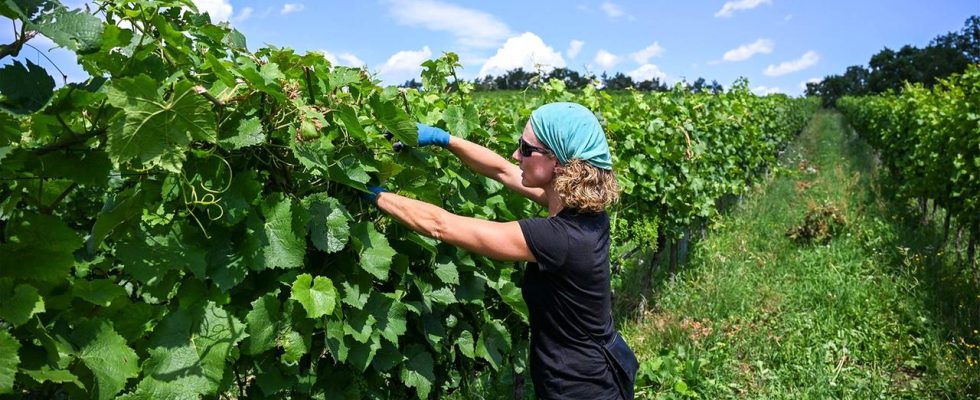The German wine harvest is expected to be significantly better this year than in 2022. The vines had enough water and there was no major storm damage, for example from hail.
Winegrowers in Germany are expecting a significantly more successful wine harvest this year. The Federal Statistical Office in Wiesbaden announced that the harvest volume is expected to be almost 9.9 million hectoliters of wine must. That is 9.1 percent more than in the previous year.
The estimated volume is also above the average for the years 2017 to 2022 – by almost 1.2 million hectoliters or 13.3 percent.
Rheinhessen is the largest cultivation area
The reasons given by the statisticians are an adequate water supply almost everywhere and no major storm damage from hail, storms and frost. The so-called downy mildew (Peronospora) only occurred more regionally. Harvest estimates are based on reports from a limited number of winegrowers who reported voluntarily.
More than half of the entire wine harvest expected in Germany is again attributable to the largest wine-growing regions of Rheinhessen (2.75 million hectoliters) and Palatinate (2.53 million hectoliters). A quarter is harvested in Baden (1.38 million hectoliters) and Württemberg (1.11 million hectoliters). The rest is distributed among the other nine growing areas.
Significant percentage increases in harvest volumes are expected in the Moselle, Württemberg, Palatinate and Rheinhessen regions, which are large in terms of area. However, smaller growing areas such as the Ahr, the Middle Rhine and Saxony also reported significant growth. In contrast, the plus is rather small in the growing regions of Baden, Saale-Unstrut, Nahe and Franconia. And in the Rheingau, the winegrowers even have to accept slight losses (minus 1.7 percent).
Almost 17 percent higher Riesling harvest expected
According to estimates, 6.61 million hectoliters (67 percent) of the harvest will be white must and 3.26 million hectoliters (33 percent) red must. White must is predominantly produced in the Moselle (90.5 percent), Rheingau (86.4 percent) and Middle Rhine (84.1 percent) growing regions in particular.
The harvest of the most popular German grape variety, Riesling, is expected to be almost 17 percent higher this year than last year. Growth is also expected for the second and third most important white grape varieties in terms of volume, Müller-Thurgau and Pinot Gris. An increase in harvest volume of almost six percent is forecast for the red grape variety Blauer Spätburgunder.

